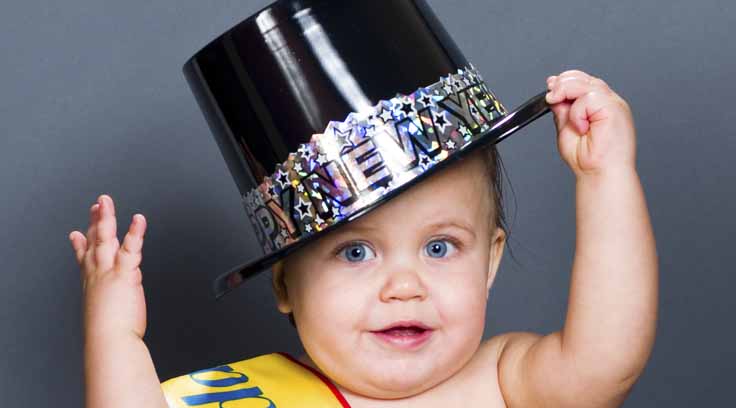
New Year’s Day: The history of the global holiday and its rituals
Most of us don’t know why we celebrate New Year’s when we do. For that matter, most of us don’t know why we do the things we do on New Year’s Eve, like host parties, make resolutions and watch some ball drop in New York City (or a giant pickle if you’re from Dillsburg, Pennsylvania). Here’s some insight on the history of New Year’s Day.
4,000 BC
In order to fully understand the history of our New Year’s celebration, you have to trace back 4,000 years to ancient Babylon, where the beginning of the New Year was marked by the first new moon following the vernal equinox when the center of the sun is on the same plane as the tilt of the earth’s axis. The Babylonians celebrated what we would now consider March as their new year and toasted the occasion with an 11-day religious festival called Akitu.
3,000 BC
The Egyptians synced the occasion with the annual flooding of the Nile, which coincided with the rising of the star Sirius.
1,400 BC
The Chinese said the Lunar New Year took place with the second new moon after the winter solstice. Called the “Spring Festival,” the celebration lasts for 15 days with a separate tradition occurring each day.
46 BC
The first Roman calendar would dictate how most of the world would look at the New Year all together. The founder of Rome, Romulus marked the New Year at the vernal equinox. The calendar soon lost pace with the sun, so emperor Julius Caesar hired astronomers and mathematicians to create the Julian calendar, which mostly resembles the Gregorian calendar that the world uses today. January 1 was honored as the first day of the year primarily because Caesar wanted to honor the month’s namesake: Janus, the Roman god of beginnings. To celebrate the New Year, the Roman’s partied, exchanged gifts and decorated their homes with laurel branches.
1582
In an attempt to carry more religious significance with the first of the year, Pope Gregory XIII reestablishes January 1 as New Year’s Day.
1788
Lyricist Robert Burns writes Auld Lang Syne, the iconic Scottish poem that is often sung at midnight on New Year’s Eve. The title of the song roughly translates to “long, long ago” or “days gone by” and is sung to the traditional folk tune, Roud 6294.
1907
New York City’s Times Square hosts the first ball drop on Manhattan’s second tallest building, the Times Building. More than 200,000 guests are said to have attended that first celebration, which today is an international symbol of hope and change.
1986
Perhaps the most notable New Year’s Day celebration in Tampa Bay involves football. In 1986, the Bay area started its signature college football bowl game with the arrival of the Hall of Fame Bowl. Typically played on New Year’s Day, the game has a $7.2 million payout and involves a third pick Big Ten school and a third pick SEC school. The name was formally changed to the Outback Bowl in 1995 when Outback Steakhouse became the title sponsor.
How we celebrate: A look at how people around the globe ring in the New Year
Spain: The Spanish and several other Spanish-speaking countries will eat a dozen grapes right before midnight for good fortune.
Italy: Lentils, which are thought to resemble coins, are served in featured dishes to stimulate future financial success.
In Cuba, Austria, Hungary and Portugal, pork is served as a representation of progress and prosperity.
In Mexico, Greece and the Netherlands, ring-shaped cakes and pastries are eaten to recognize the year that has just come full circle.
In Sweden and Norway, families serve rice pudding with a hidden almond inside. Whoever is served the nut is said to have good fortune in the year ahead.
In the United States, we have one primary tradition (besides a hangover on the first of the year): make a resolution. The Babylonians, who were looking to earn the favor of the gods to start off the New Year, are said to have started the tradition of resolutions.